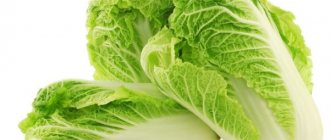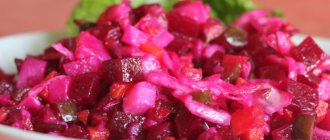One regular tomato has 19.9 kcal, but a cherry tomato has only 4.8. Find out the calorie content of tomatoes in fresh, salted and pickled form, take note of 5 recipes and lose weight easily!
Author: Kristina Lobanovskaya, doctor, practicing nutritionist Article updated: 11/09/2020
Tomatoes are a very common vegetable crop, the fruits of which, depending on the variety and degree of ripeness, can have different shapes (round, elongated, heart-shaped, flattened), size (from small cherry tomatoes to giant kilogram ones) and color (green, yellow, pink, red, dark burgundy). All of them are an excellent dietary product with low calorie content, allowing you to lose weight easily and comfortably.
Fresh
In its raw form, the average calorie content of a tomato is 19.9 kcal per 100 grams. If we translate these indicators into piece measurements, then depending on the size and weight of a fresh tomato, the calorie content will be:
- 1 PC. with a diameter of 6 cm and a weight of 80 g - 15.9 kcal;
- 1 PC. with a diameter of 7 cm and a weight of 120 g - 23.9 kcal.
Only the smallest fruits of the cherry variety have a slightly lower energy value (18 kcal/100 g). One such “cherry” with a diameter of 2 cm contains only 4.8 kcal.
Micro- and macroelements in Salted tomatoes
Salted tomatoes contain the following elements: Mono- and disaccharides, Ash, Water, Organic acids, Dietary fiber, Potassium, Phosphorus, Magnesium, Calcium, Iron.
| Micro and macro element | Meaning |
| Mono- and disaccharides, g. | 1,6 |
| Zola, Mr. | 3,1 |
| Water, city | 90 |
| Organic acids, g. | 1,2 |
| Dietary fiber, g. | 0,8 |
| Potassium, mg | 290 |
| Phosphorus, mg | 26 |
| Magnesium, mg | 20 |
| Calcium, mg | 14 |
| Iron, mg | 0,9 |
Solyonykh
The calorie content of salted tomatoes is even lower - only 13 kcal/100 g. This is explained by the fact that when pickling at home, the brine is prepared only from water and salt - ingredients that have zero energy value. When such a solution is absorbed, the calorie content of the tomato decreases slightly, since its weight increases due to the addition of water. But during the period of losing weight, this product should not be abused, since salt promotes fluid retention in the body and leads to swelling, which reduces the effectiveness of the diet.
The situation is somewhat different with salted green tomatoes. Due to their denser structure, when pickled, they absorb less water, so the calorie content of a tomato in this case is reduced only to 19.2 kcal/100 g. In addition, green fruits are not so salty and are more suitable for consumption during weight loss.
What is the harm in pickles with tomatoes?
We have figured out how many calories there are in pickled and salted tomatoes - there are significantly fewer of them compared to fresh fruits, although in any case this vegetable is a low-calorie food product. It contains numerous useful elements, the deficiency of which our body usually experiences during the cold season.
Vegetables in this form awaken the appetite more strongly, so it is better not to eat them while on a diet. In addition, in order to avoid excess salt entering the body, it is not recommended to overuse pickled and salted fruits. This is especially true for people with stomach diseases.
Pickled
The highest calorie of all types of canned tomatoes are pickled ones - their energy value is 32 kcal/100 g. This is explained by the fact that even when preparing a marinade at home, sugar is always used along with vinegar and salt. For this reason, the calorie content of the brine increases to 12 kcal/100 ml. In addition, under the influence of vinegar and boiling water, which is poured into tomatoes canned in this way, a significant part of the beneficial substances contained in them is destroyed. Although they still remain a very valuable food product.
Rating of food delivery for weight loss
Delivery of food with calculated calorie content, ready-made diets. No more cooking and counting calories!
Go
Go
Harm and contraindications to eating pickled tomatoes
Due to the vinegar content in pickled tomatoes, they are a rather aggressive product that cannot be consumed for every disease. Pickled tomatoes should be consumed with caution in the following cases:
- Abuse. Too frequent consumption of this delicacy can, under certain circumstances and non-compliance with dietary culture, cause the occurrence of kidney stones.
- Binge eating. Everything should be in moderation, but with this product, violating this rule can lead to stomach upset.
- Allergy. In case of severe allergic reactions to citrus fruits and other foods, you need to introduce the product into the diet in small portions at large intervals. If rash, redness, or difficulty breathing occurs, stop use immediately.
Absolute contraindications to the consumption of pickled tomatoes:
- Pregnancy. Canned tomatoes contain a lot of salt, which puts additional stress on the kidneys, which can affect not only your health, but also the condition of the child.
- Lactation. Vinegar and seasonings can adversely affect the composition of milk. This can lead to the baby giving up breastfeeding prematurely.
- Any gastrointestinal diseases. In the acute stage, this product will cause a deterioration in health, and during remission it can provoke a return to exacerbation.
- Kidney and liver diseases. With this diagnosis, you should avoid any pickled or overly salty foods.
Dishes
Tomatoes are consumed not only raw, salted and pickled. They are dried, fried, baked, sauces and ketchups are prepared from them, added to soups, main courses and fillings for open pies, and tomato juice, unique in its taste and nutritional qualities, is squeezed out.
Tomato juice
This is a fairly thick drink with a bright tomato taste and aroma. Tomato juice contains the pulp of ripe fruits, so when freshly squeezed it has almost all the properties of fresh tomatoes. Its energy value is 17 kcal/100 ml, which is even slightly less than that of the fruit.
It is recommended to consume tomato juice immediately after squeezing in order to get all the beneficial substances contained in the fruit. In addition, the product is added to various dishes, canned separately as a drink, and is also widely used in the preparation of other preparations. It is especially recommended to use it for preparing tomatoes in their own juice. This method of canning allows you to preserve the original calorie content of tomatoes and even reduce it somewhat, while avoiding the disadvantages that salted and pickled fruits have.
Sun-dried tomatoes
The benefits of sun-dried tomatoes are due to the fact that in such a dish all the vitamins and minerals given by nature are preserved. The calorie content of dried tomatoes is 258 kcal/100 g.
Drying tomatoes is quite simple:
- cut into quarters (or halves if it’s cherry);
- remove excess pulp and juice with a teaspoon;
- sprinkle with spices and herbs to taste;
- lightly sprinkle with olive oil;
- place on a baking sheet;
- Place in an oven preheated to 120 ºC for 2 hours.
Cooled tomato slices are stored in tight fabric bags, like dried fruit, or poured with olive oil in an airtight container.
Tomato salad
The simplest, but very tasty and healthy dish made from tomatoes is salad. Its energy value is 53.1 kcal/100 g.
You just need to cut the fruits into small slices, add a little chopped green or onion, add salt and season with vegetable oil. To obtain the indicated calorie content, take 10 g of oil per 250 g of tomatoes. You can also prepare a salad with sour cream, but to do this you should take into account how much fat it has. To maintain the same calorie content of the dish, instead of 10 g of butter, you should take 50 g of low-fat (15%) sour cream.
Scrambled eggs with tomatoes
To prepare the dish, first fry 50 g of onion in 1 tbsp. l. vegetable oil, then add a medium-sized tomato cut into small pieces, simmer a little and then beat 2 eggs into the mixture. The eggs can be fried covered as a fried egg or mixed together for faster cooking. The energy value of the finished product is 132.3 kcal/100 g.
Omelette with tomatoes
In order not to increase the nutritional value, it is recommended to cook the omelette without oil - in a non-stick frying pan or steamed. When preparing a dish from 2 eggs, 50 ml of milk and 50 g of tomatoes, its calorie content in this case will be 102.2 kcal/100 g.
Description
Canned tomatoes are everyone's favorite dish. Experienced housewives use this method of preparation to preserve products and their taste.
It is believed that tomatoes appeared in Rus' much earlier than potatoes or tobacco. Their homeland is called South America. Tomatoes were originally planted as a fence and ornamental plant. The idea that the fruits could be eaten did not occur to anyone for a long time. The rather bright color scared people away. For a long time they were sure that this plant was very poisonous. This opinion existed not only in Rus'. One brave man managed to dispel it, who decided to prove the opposite to everyone and, right before the court, near which a large number of people had gathered, ate a whole basket of tomatoes. He dispelled the myth and proved that they do not contain any poisons. Later they began to study this vegetable and its taste.
Currently, tomatoes occupy a significant place in the culinary arts of many countries. Canned vegetables, just like fresh ones, complement the festive and everyday table, give an amazing taste and many benefits for the body.
You can prepare a lot of dishes and various preparations from tomatoes. They are canned, pickled, and salted. At the same time, very different and rather incompatible ingredients are added, which give a special piquant taste to the tomatoes and combine perfectly. They are:
- melon;
- cherry plum;
- vodka;
- corn;
- honey;
- ketchup.
Canned tomatoes complement almost any dish well, especially meat and fish, as well as potatoes, peas and all kinds of cereals.
Particular attention should be paid to the shelf life of canned tomatoes. When purchasing this product in a store, you should not buy a product with last year’s production date. Despite the fact that self-canned tomatoes can be stored for one year, and store-bought ones - three, this does not mean the good quality of the product, but on the contrary. In production, many preservatives and flavor enhancers are used during preparation, which extend shelf life, but can have a detrimental effect on health. It is not recommended to purchase tomatoes with a swollen lid: they are very dangerous for the body.
Since self-canned tomatoes do not contain any preservatives, their shelf life is only one year. After this time, botulism toxin may begin to develop in the fruits, which provokes poisoning and quite often leads to death. Also, with longer storage, many vitamins and microelements contained in tomatoes lose their qualities and become unsafe for health. If you have any doubts about the quality of a purchased or long-prepared product, you should not consume it.
We will tell you in more detail about the benefits and harmful properties of canned tomatoes below.
The nutritional value
With minimal calorie content, tomatoes have high nutritional value and an optimal ratio of dietary fats, which is why they are often included in the menu of various diets. In addition, you can spend fasting days on fruits and tomato juice and even follow a mono-diet.
Proteins fats carbohydrates
The content of proteins, fats and carbohydrates in tomatoes of different varieties and different degrees of ripeness varies slightly. As a rule, the amount and proportions of BJU depend on the color of the tomatoes:
- 100 g of red fruits contain (in grams): proteins - 1.1;
- fat - 0.2;
- carbohydrates - 3.7;
- proteins - 0.9;
- proteins - 0.6;
- proteins - 1.0;
- proteins - 0.8;
It should be borne in mind that fruits with a sweeter taste contain more carbohydrates, which slightly increases the calorie content of tomatoes of these varieties.
Macro- and microelements
Tomatoes contain a lot of fiber, pectin, and minerals. The chemical composition of the fruit is represented by the following elements:
| Macro- and microelements | Quantity per 100 g | % of daily value |
| Potassium | 290 mg | 11.6% |
| Chlorine | 57 mg | 2.5% |
| Sodium | 40 mg | 3.1% |
| Phosphorus | 26 mg | 3.3% |
| Magnesium | 20 mg | 5% |
| Calcium | 14 mg | 1.4% |
| Sulfur | 12 mg | 1.2% |
| Iron | 0.9 mg | 5% |
| Bor | 115 mcg | |
| Copper | 110 mcg | 11% |
| Fluorine | 20 mcg | 0.5% |
| Nickel | 13 mcg | |
| Molybdenum | 7 mcg | 10% |
| Cobalt | 6 mcg | 60% |
| Chromium | 5 mcg | 10% |
| Iodine | 2 mcg | 1.3% |
| Selenium | 0.4 mcg | 0.7% |
| Zinc | 0.2 mg | 1.7% |
| Manganese | 0.14 mg | 7% |
Of particular value is the presence of potassium, copper and cobalt in tomatoes:
- potassium is the main intracellular ion, without which normal regulation of water, electrolyte and acid balance, as well as the conduction of nerve impulses, is impossible;
- copper - improves redox processes, increases the absorption of proteins, participates in iron metabolism, increases the supply of oxygen to tissues;
- cobalt - increases the activity of enzymes that affect the metabolism of fatty acids and folic acid metabolism.
In addition, ripe fruits contain lycopene, a carotenoid coloring pigment that gives the fruits their color. Lycopene is a powerful antioxidant that protects the most important internal organs (especially the stomach, intestines, lungs) and tissues from cancer, reduces the risk of cardiovascular diseases and slows down the aging process.
Vitamins
The vitamin composition of tomatoes is also rich and varied:
| Vitamins | Quantity per 100 g | % of daily value |
| C (ascorbic acid) | 25 mg | 27.8% |
| B4 (choline) | 6.7 mg | 1.3% |
| Beta carotene | 1.2 mg | 24% |
| PP (nicotinic acid) | 0.5996 mg | 3% |
| E (alpha tocopherol) | 0.4 mg | 2.7% |
| B5 (pantothenic acid) | 0.3 mg | 6% |
| A (retinol) | 0.2 mg | 22.2% |
| B6 (pyridoxine) | 0.1 mg | 5% |
| B1 (thiamine) | 0.06 mg | 4% |
| B2 (riboflavin) | 0.04 mg | 2.2% |
| B9 (folic acid) | 11 mcg | 2.8% |
| K (phylloquinone) | 7.9 mcg | 6.6% |
| H (biotin) | 1.2 mcg | 2.4% |
In terms of the amount of ascorbic acid, tomatoes are not inferior to citrus fruits and black currants. Vitamin C is an active participant in redox reactions, improves the functioning of the immune system, strengthens blood vessels and promotes overall rejuvenation of the body. Considering the low calorie content of a tomato, this vitamin and mineral composition makes it one of the best foods for dietary nutrition.
Product calorie analysis
Ratio of proteins, fats and carbohydrates:
- Vitamin A
is responsible for normal development, reproductive function, skin and eye health, and maintaining immunity. - B-carotene
is provitamin A and has antioxidant properties. 6 mcg of beta carotene is equivalent to 1 mcg of vitamin A. - Vitamin C
is involved in redox reactions, the functioning of the immune system, and promotes the absorption of iron. Deficiency leads to loose and bleeding gums, nosebleeds due to increased permeability and fragility of blood capillaries. - Potassium
is the main intracellular ion that takes part in the regulation of water, acid and electrolyte balance, and is involved in the processes of conducting nerve impulses and regulating blood pressure. - Silicon
is included as a structural component in glycosaminoglycans and stimulates collagen synthesis. - Chlorine
is necessary for the formation and secretion of hydrochloric acid in the body. - Cobalt
is part of vitamin B12. Activates enzymes of fatty acid metabolism and folic acid metabolism. - Copper
is part of enzymes that have redox activity and are involved in the metabolism of iron, stimulates the absorption of proteins and carbohydrates. Participates in the processes of providing oxygen to the tissues of the human body. Deficiency is manifested by disturbances in the formation of the cardiovascular system and skeleton, and the development of connective tissue dysplasia.
still hide
You can see a complete guide to the healthiest foods in the “My Healthy Diet” app.
source
The calorie content of salted and pickled tomatoes is of interest to many people, because delicious homemade pickles are a good tradition in our country. In more than one housewife's cellar there is a jar or two of salted tomatoes, lovingly pickled for the winter. In addition, vegetables in this form are sold in stores; in this case, the composition and calorie content of pickled tomatoes is indicated on the label. However, the store-bought version is not to everyone's taste - sometimes there is a lot of vinegar, sometimes there is not enough salt, sometimes there is not enough garlic. A homemade recipe for preparing tomatoes will allow you to take into account all the nuances and preferences of your household.
It will not be superfluous to know how to reduce the calorie content of pickled and salted tomatoes and choose a recipe so that the product does not contain anything unnecessary or harmful. This is what we will talk about today.
Properties of canned tomatoes
Nutritional value and composition | Vitamins | Minerals
How much does canned tomatoes cost (average price per 1 kg)?
Moscow and Moscow region.
50 rub.
Tomatoes are good not only fresh, but also as canned dishes. Most often, canned tomatoes come in a wide variety of preparations: salted or pickled tomatoes, in the form of tomato puree or whole in their own juice. Canned tomatoes can also be understood as tomato sauce, juice and even jam. As you know, these delicious fruits are included in all kinds of mixed vegetables, salads and lecho.
Undoubtedly, for many, the most favorite type of canned tomatoes are those cooked in marinade. They are distinguished by a mild sourness and a pleasant, subtle sweetness. These canned tomatoes are great as a savory snack or used as a meal on their own.
An original snack preparation can be called canned stuffed tomatoes, for the preparation of which not only ripe medium-sized tomatoes, but also green fruits are suitable. Minced meat is made from various vegetables and fresh herbs: onions (green and onions), carrots, parsley, garlic, dill and celery root. Stuffed tomatoes are filled with tomato juice and then sterilized.
In order for canned tomatoes to turn out successful, you need to know some subtleties in their preparation. In particular, the choice of raw materials plays an important role. Thus, ripened fruits are best suited for making tomato puree; for jam, green tomatoes are used, which are distinguished by dense pulp. Both red and pink fruits, as well as green and brown fruits, are salted and pickled, but it is recommended to preserve them separately, without mixing different types in one jar. By the way, overripe tomatoes are not suitable for these purposes.
When selecting tomatoes for canning, you need to make sure that there are no damages or stains on the vegetables - otherwise, preparations with such tomatoes will not be stored well. When canning tomatoes as a whole, I advise you to pierce their tops with a toothpick so that they do not burst during heat treatment.
In general, no matter what type of canned tomatoes you prefer, remember that whole tomatoes preserve vitamins and other beneficial substances better. The calorie content of canned tomatoes also varies depending on the additives used, but in general it is quite low.
Botanical description, what they look like and where they grow
Tomato (tomato) is a plant belonging to the genus Nightshade of the Solanaceae family. Known as a vegetable crop. The word “tomato” means “golden apple” in Italian.
The plant has a very developed root system, which grows and forms extremely quickly. Roots can go into the soil to a depth of 1 meter or more and form on any part of the stem. This makes it possible to propagate tomatoes not only by seeds, but also by stepsons and cuttings.
The stem of the tomato is lodging or erect, reaching a height of 2 meters or more, and the leaves are dissected into large lobes and imparipinnate. The plant has small and unremarkable yellow flowers collected in a raceme.
The fruits of the vegetable are of different shapes. They can be small, medium and large. The color of the fruits ranges from pink to crimson, from white to golden yellow.
The plant is thermophilic. It is best to grow it at a temperature of +22…+25 °C. The vegetable crop has a negative attitude towards high air humidity, but responds responsively to abundant watering. For growth and development, it needs good lighting and additional lighting during the seedling period.
The tomato is native to South America. Its semi-cultivated and wild forms still grow on this continent.
The benefits of canned tomatoes
The benefits of canned tomatoes for human health are due to the rich composition of fresh tomatoes themselves. For example, these vegetables contain valuable lycopene, which is a fairly powerful antioxidant, so it helps in the treatment of many diseases. Accordingly, consuming both fresh and canned tomatoes reduces the risk of developing cardiovascular diseases.
In addition, the benefits of canned tomatoes due to their antibacterial and anti-inflammatory effects have been proven. True, it is worth considering that the most valuable in this regard are vegetables that are prepared without the use of vinegar, since this substance does not have a particularly beneficial effect on the gastrointestinal tract.











